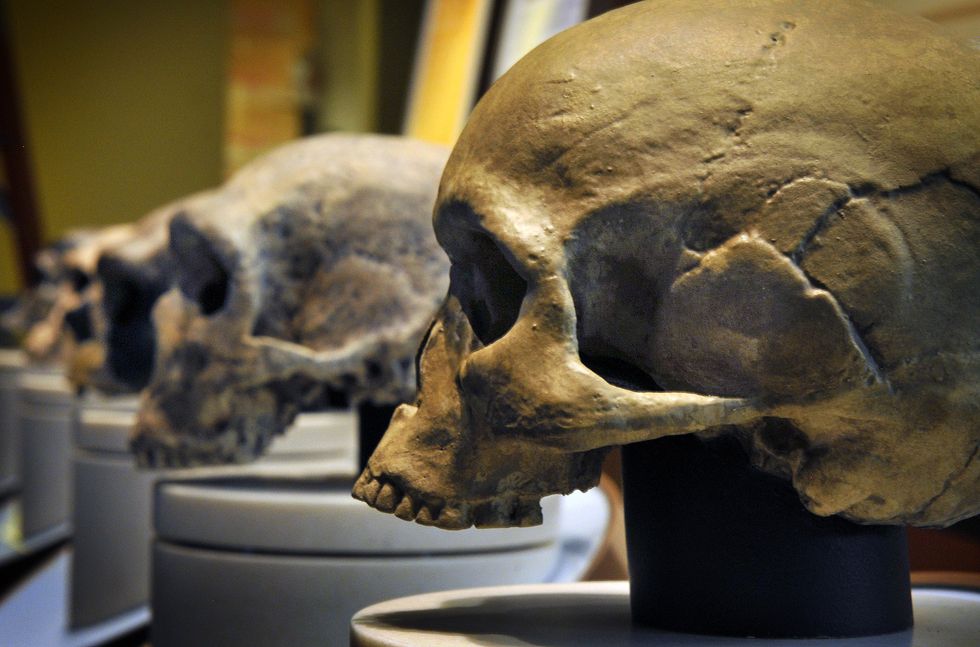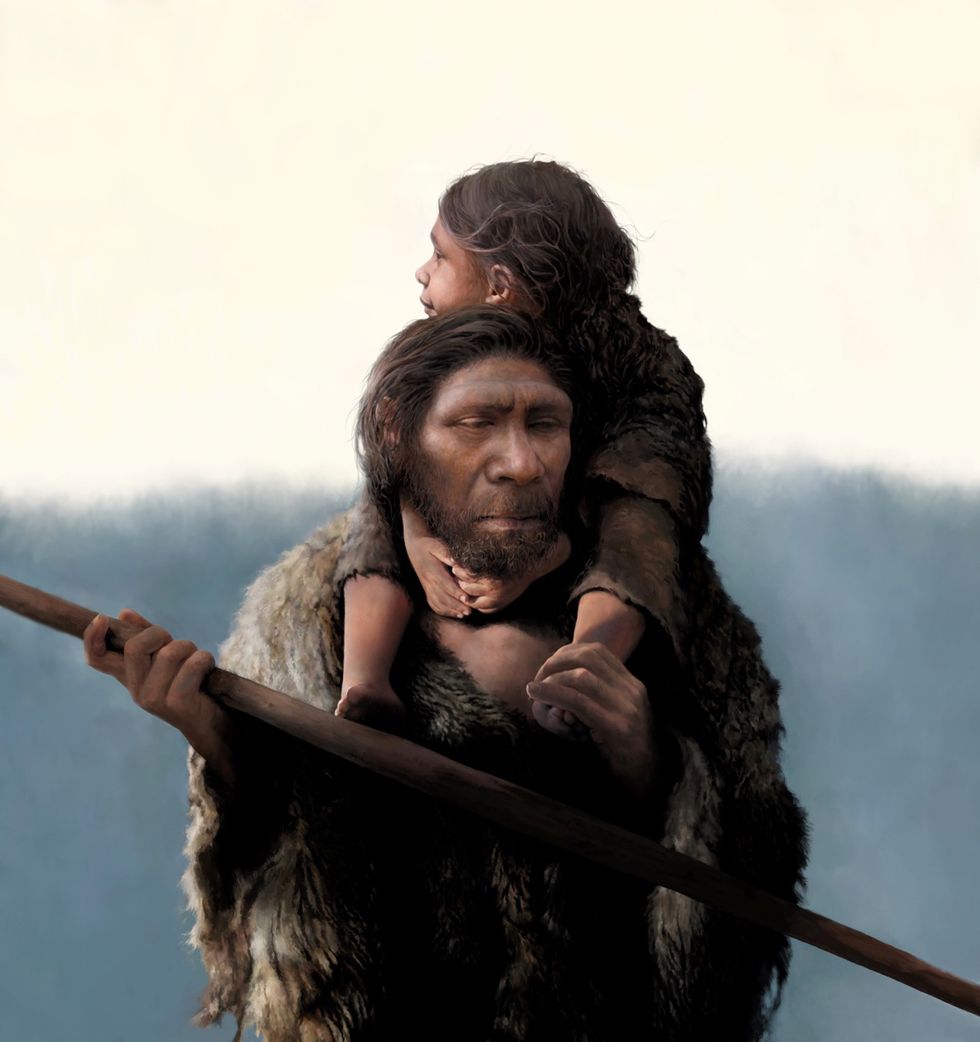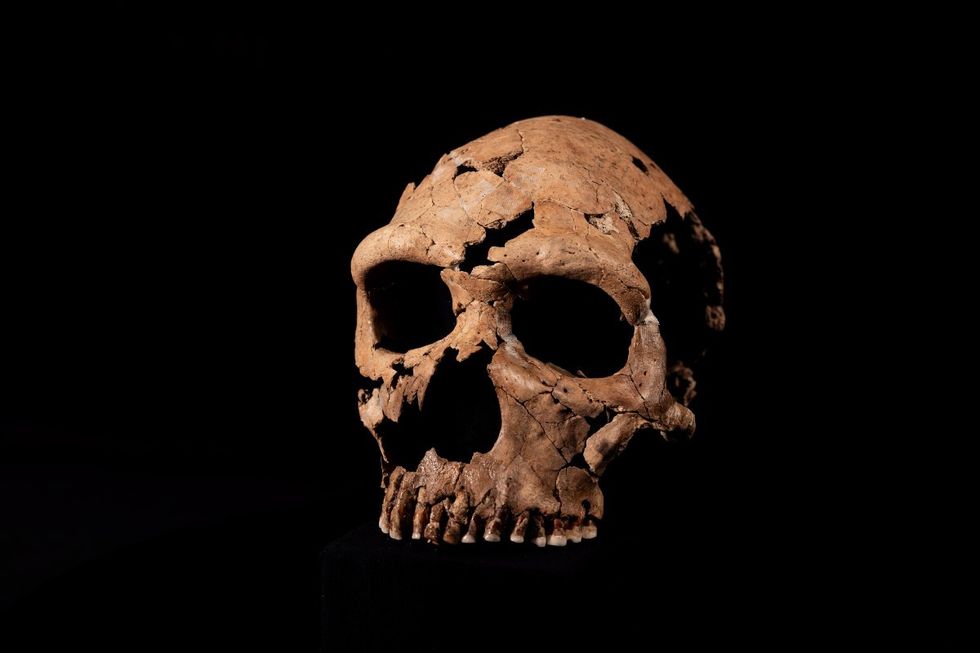Human origins: Neanderthals and Homo sapiens mated within past 50,000 years, new research suggests
Getty/PA
Neanderthal DNA makes up around 1-2 per cent of the average human genome
Don't Miss
Most Read
Trending on GB News
Two groundbreaking studies have pinpointed when ancient humans and Neanderthals interbred, with both research teams concluding the mixing occurred around 47,000 years ago.
The research, published in Nature and Science journals, analysed the oldest human DNA ever sequenced to reveal details about this crucial period in human evolution.
Scientists examined ancient genomes from early human remains found in Germany and the Czech Republic, alongside DNA from hundreds of ancient and modern humans.
The research teams independently arrived at similar timeframes for when this interbreeding occurred.
One study, examining DNA from ancient remains, suggested the mixing took place between 49,000 and 45,000 years ago.
The second study, which analysed genomes from 300 present-day and ancient individuals, estimated a period between 50,500 and 43,500 years ago.

Skulls showing chain of human evolution (ending with Homo sapiens)
Getty Images
"We were far more similar than we were different," said Priya Moorjani from the University of California, Berkeley.
Scientists describe it as a single extended period of gene flow, with the peak of interaction occurring around 47,000 years ago in the Middle East.
Researchers examined DNA from six individuals found in a cave beneath a medieval castle in Ranis, Germany, including a mother and daughter pair.
These remains, dating back 45,000 years, represent the oldest human genomes ever sequenced.
A woman's skull discovered at Zlatý kůň in the Czech Republic, about 145 miles away, was found to be distantly related to two of the Ranis individuals.
MORE SCIENCE:

Artist impression of Homo Neanderthalensis - Modern humans have an average of 2 per cent Neanderthal DNA in their genomes
PA
The skull showed evidence of a possible predator attack, with marks suggesting hyenas either attacked her or gnawed on the remains after death.
Neanderthal DNA continues to shape human traits today, with most people carrying up to four per cent of Neanderthal genes in their genome.
Some of these inherited variants proved beneficial for survival, particularly those related to immune response and skin pigmentation.
"Neanderthals were living outside Africa for thousands of years before modern humans arrived, and they were presumably adapted to the climate and pathogens outside Africa," explained University of California's Priya Moorjani.
"Thus, some of their genes may have been beneficial to modern humans."

75,000-year-old Neanderthal skull
PA
One example includes an immune gene variant that protects against coronaviruses, including the one that caused the COVID pandemic.
However, some regions of human DNA are completely devoid of Neanderthal ancestry, suggesting certain gene variants proved lethal and weren't passed down.
The early humans who lived in Europe around 45,000 years ago had distinctly different appearances from most modern Europeans.
"These early Europeans numbered just a few hundred and had dark skin, dark hair and brown eyes, reflecting their arrival from Africa," said Geoff Smith, a zooarchaeologist from the University of Reading.
These pioneer populations faced harsh Ice Age conditions and ultimately died out completely.
"It's kind of interesting to see that human story is not always a story of success," said Johannes Krause from the Max Planck Institute for Evolutionary Anthropology.
The Ranis and Zlatý kůň individuals have no living descendants today, representing a lost branch of the human family tree.
The new timeline helps scientists better understand when humans left Africa and spread across the globe.
The research suggests the main wave of migration from Africa was essentially complete by 43,500 years ago, as most humans outside Africa today share Neanderthal ancestry from this period.
However, several mysteries remain unsolved, including why East Asians today have more Neanderthal ancestry than Europeans.
Scientists are also puzzled by why Neanderthal genomes from this period show little evidence of human DNA.
The findings suggest that multiple human lineages, not just Neanderthals, went extinct around 40,000 years ago.








